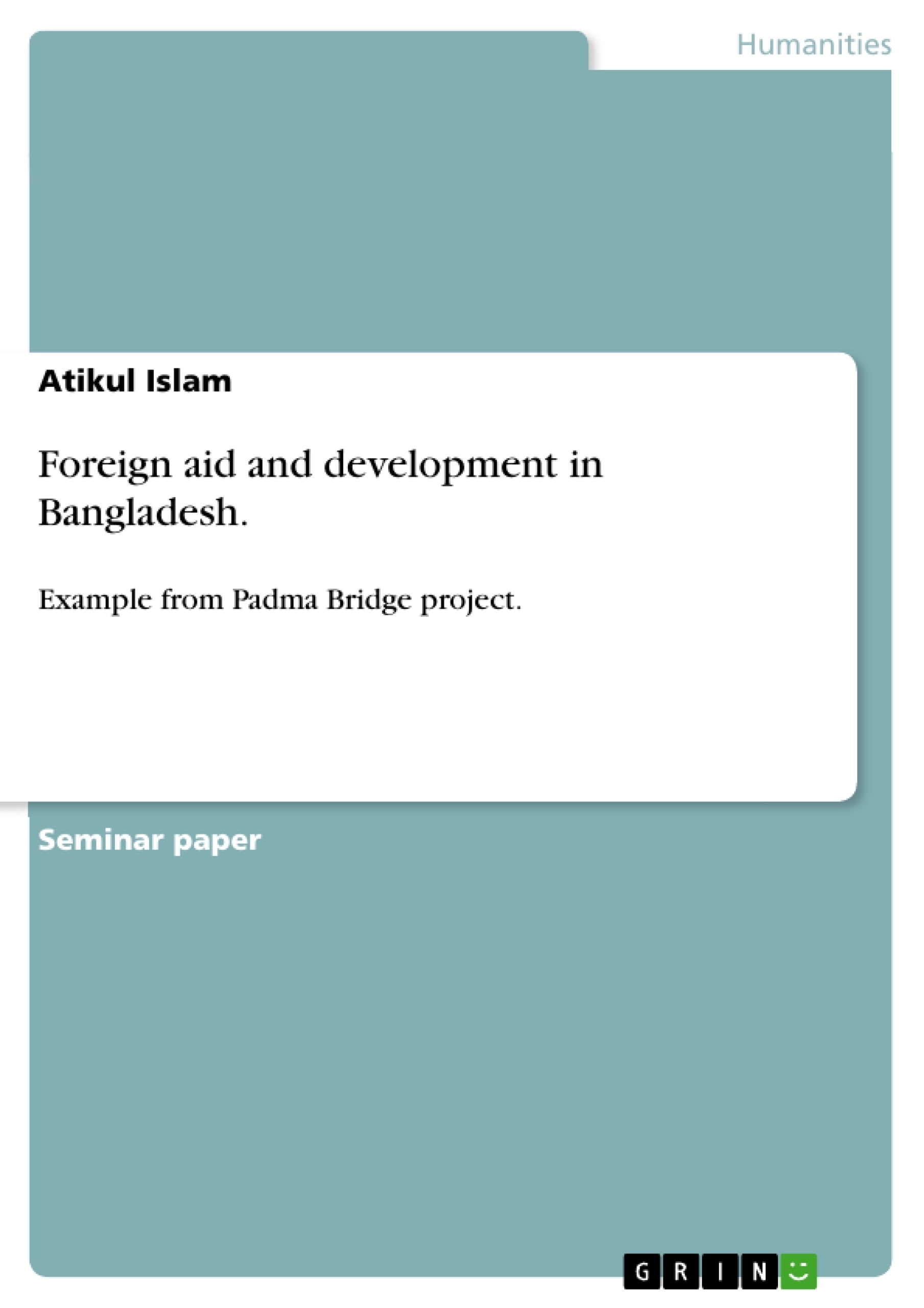The effectiveness of foreign aids to the third world developing countries is a controversial issue. Liberal economists thought, key to economic success is appropriate usage of loans, and if it is utilized effectively, such loans can have a hugely important role to play. Loans can contribute to poverty reduction, to fill the deficit of budget gap, to build big construction such as bridge, roads, public buildings, educational institutions etc. But critique of foreign aid such as Andre Gudner Frank argues that foreign aid is a means of domination, dependency, exploitation to the third world developing countries. In the colonial era, imperialist countries accumulated raw materials, natural resources, mineral resources etc. directly through colonialism or imperialism. In the present neocolonial or neoliberal society, aid is a new form of domination, dependency to the third world countries and also a means of trade, marketing of machineries, technologies etc.
Bangladesh, located in South Asia, is one of the poorest countries in the world. According to the UNDP’s 2010 Country Summary report, the country has a large population 164.7 million and having GDP per Capita is $ 1300. External debt is $ 316.7 per $ 1000 GDP. Foreign aid both grants and loans has impacts on the economy of Bangladesh. It contributes to the development works like bridge, roads, highways, infrastructural works etc. But it is also leading to growing indebtedness, dependency, domination etc.
Padma Bridge project is the most recent and best example of foreign aid as means of development or dependency of a country. World Bank is gradually delaying the project for the acquisition of corruption against SNC- Lavalin Company and former communication minister Sayad Abul Hoshen etc. But there is also acquisition against World Bank that it was itself was in favor of fault lender institution. Recently, Bangladesh has withdrawn its proposal from World Bank but World Bank has declared that proposed loan for Padma Bridge is fixed for Bangladesh and Bangladesh can use the loan in other development projects.
My paper argues that foreign aid has impact on the development but it is also means of domination and trade of donors. Bangladesh is not self sufficient not to take the aid but if the aid is channeled through appropriate biding and utilized effectively, such aid can have hugely important role for development.
Inhaltsverzeichnis (Table of Contents)
- Abstract
- Introduction
- Definition of foreign aid
- Historical background of foreign aid
- Foreign aid to Bangladesh
- Motives of foreign aid
- The recipient perspectives
- The donor perspective
- Foreign aid and development
- Dependency
- Aid and trade
- Corruption
- Debt entrapment
- Conclusion
- References
Zielsetzung und Themenschwerpunkte (Objectives and Key Themes)
The text explores the complex and multifaceted role of foreign aid in the development of Bangladesh, examining its historical context, motivations, and consequences. It focuses on the impact of foreign aid on the country's economy, governance, and development projects, particularly using the Padma Bridge project as a case study.
- The effectiveness and impact of foreign aid in developing countries
- The role of foreign aid in economic development, governance, and human rights
- The potential for foreign aid to create dependency, corruption, and debt entrapment
- The case of the Padma Bridge project as an example of foreign aid in practice
- The balance between the potential benefits and risks of foreign aid for developing countries
Zusammenfassung der Kapitel (Chapter Summaries)
The text begins by introducing the debate surrounding the effectiveness of foreign aid and the differing viewpoints on its impact on developing countries like Bangladesh. It highlights the role of foreign aid in Bangladesh's economic development, outlining the country's reliance on external assistance for its budget, trade, and development programs.
The text then delves into the definition and history of foreign aid, exploring the origins and evolution of the aid industry and its role in international development. It examines the different types of foreign aid, including grants, loans, and technical assistance, and highlights the role of the Bangladesh Aid Group in providing aid to the country.
Finally, the text focuses on the Padma Bridge project, a significant development project that showcases the complexities of foreign aid. It discusses the challenges associated with the project, including the World Bank's withdrawal from funding due to corruption allegations. The text explores alternative funding options from countries like Malaysia and China, and the implications of these proposals for Bangladesh's economic and political autonomy.
Schlüsselwörter (Keywords)
The primary keywords and focus topics of the text include foreign aid, development, Bangladesh, Padma Bridge project, dependency, corruption, debt entrapment, donor countries, recipient countries, and the role of international organizations such as the World Bank and the Asian Development Bank. The text explores the intricate relationship between foreign aid, development, and economic sustainability, examining both the potential benefits and drawbacks of aid in achieving long-term development goals.
- Quote paper
- Bachelor of Social science in sociology. Atikul Islam (Author), 2013, Foreign aid and development in Bangladesh., Munich, GRIN Verlag, https://www.hausarbeiten.de/document/213400


